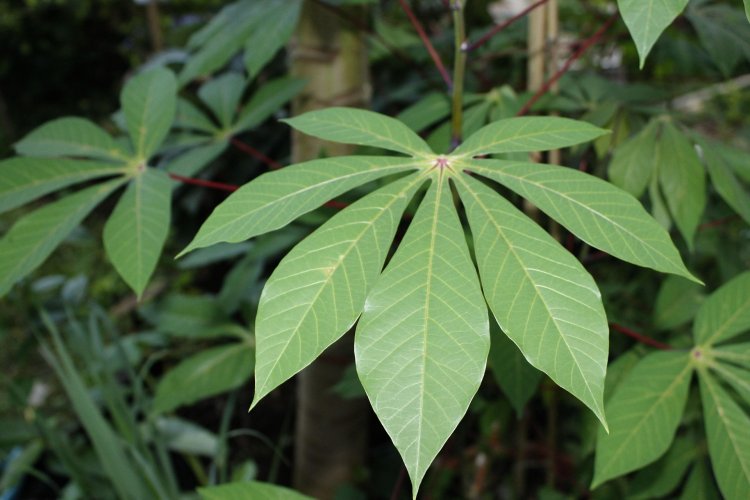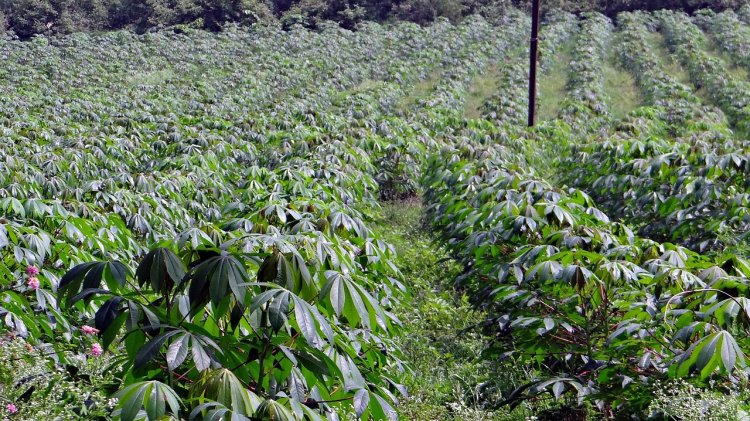Could Cassava Be Your 2025 Game-Changer? Discover Why This Super Crop Is Feeding the World and Filling Wallets Globally
Discover cassava farming in 2025: a beginner’s guide to growing this profitable, sustainable crop that feeds millions. Learn tips, varieties, and trends!

Imagine a crop so tough it thrives in drought, so versatile it feeds millions and fuels industries, and so profitable it’s turning smallholder farmers into entrepreneurs. That crop is cassava, and in 2025, it’s taking the world by storm. Whether you’re a farmer looking to diversify, an entrepreneur eyeing agribusiness, or just curious about sustainable farming, this guide to cassava farming will show you why this humble root is the crop of the future—and how you can cash in on its potential. Let’s dig in!

A Cassava farmland
Why Cassava Is the Hottest Crop of 2025
Cassava (Manihot esculenta), also known as yuca, manioc, or tapioca, is a starchy root crop native to South America but now a global superstar, especially in Africa, Asia, and Latin America. Here’s why cassava is stealing the spotlight in 2025:
Resilience: Cassava laughs in the face of poor soils and low rainfall, making it a climate-smart choice in a warming world. It’s drought-tolerant and can grow where other crops fail.
Versatility: From garri and fufu to gluten-free flour, ethanol, animal feed, and industrial starch, cassava’s uses are endless. In 2025, demand for cassava-based products is skyrocketing, especially in gluten-free and health food markets.
Profitability: Posts on X highlight that cassava’s gross margins per hectare are three times higher than maize, with a ready domestic and export market. Nigeria alone, the world’s top producer, is seeing cassava drive economic growth.
Food Security: Feeding over 800 million people worldwide, cassava is a staple that’s also a famine reserve, harvestable on demand.

farmers ensuring food security
Sustainability: Innovations like the FAO’s Save and Grow model are boosting yields by up to 400% without heavy chemical inputs, making cassava farming eco-friendly.
With global interest in sustainable crops and food security at an all-time high, cassava is poised for viral attention. Let’s explore how you can start or scale your cassava farm in 2025.
Step-by-Step Guide to Cassava Farming in 2025
Cassava farming is accessible, but success requires planning and know-how. Here’s a detailed roadmap to get you started, optimized for 2025 trends and practices.
- Choose the Right Location
Cassava loves tropical and subtropical climates. In 2025, focus on:
Soil: Deep, well-drained loamy soils are ideal, but cassava tolerates poor soils. Look for flat or gently sloping land with thick vegetation as a sign of fertility.
Climate: Warm, moist conditions with 500–1000 mm of rainfall annually are perfect. Cassava can handle drought, but consistent moisture boosts yields.
Pro Tip: If your soil needs improvement, add organic manure or intercrop with legumes to enrich it naturally.
- Select High-Yielding Varieties
In 2025, biotech advancements are delivering disease-resistant, high-yielding cassava varieties. Popular choices include:
TMS 30572 (Nigeria): High yield, mosaic virus-resistant.
Kiroba (Tanzania): High starch content, ideal for industrial use.
Biofortified Varieties: Rich in vitamins A and C, perfect for health-conscious markets.
Where to Source: Contact local agricultural research institutes like the International Institute of Tropical Agriculture (IITA) or certified seed suppliers. Projects like BEST Cassava in Tanzania are making quality stems accessible.
- Prepare the Land
Land prep sets the stage for a bumper harvest. In 2025, sustainable practices are key:
Clearing: Remove weeds and debris manually or with eco-friendly herbicides.
Tilling: Use minimal tillage to preserve soil structure, as recommended by the FAO’s Save and Grow model.
Fertilization: Apply organic manure (10–20 tons/ha) or mineral fertilizers if needed. Dolomite lime (100 kg/ha) can balance soil pH.
Viral Tip: Share before-and-after photos of your land prep on social media with hashtags like #CassavaFarming2025 to inspire others and build a following.
- Planting Like a Pro
Timing and technique are everything:
When to Plant: In Nigeria, March–April or October–November ensures optimal rainfall. In other regions, align with the rainy season.
How to Plant: Cut healthy stems (20–25 cm long) from mature plants and plant at a 45-degree angle, 1 meter apart, in rows. Ensure 2–3 nodes are buried.
Innovation Alert: Mobile apps in 2025, like those from IITA, offer planting guides and weather forecasts to optimize timing.
- Manage Your Crop
Cassava is low-maintenance but benefits from care:
Weeding: Weed manually or with selective herbicides in the first 3 months. Mulching reduces weed growth and retains moisture.
Pest Control: Watch for whiteflies, mealybugs, and cassava mosaic disease. Use biological controls like predatory mites or resistant varieties. In 2025, drone-based pest monitoring is gaining traction in large farms.
Intercropping: Plant with beans or sorghum to boost soil health and diversify income, as seen in Colombia’s success stories.
Viral Hack: Post time-lapse videos of your cassava growth on TikTok or Instagram Reels—watch engagement soar!
- Harvest Smart
Cassava is ready 9–18 months after planting, depending on the variety and market needs:
When to Harvest: Harvest when roots are firm and starchy. Early harvesting (9–12 months) suits food markets; later (12–18 months) is ideal for starch.
How to Harvest: Dig carefully around the plant to avoid damaging roots. Use mechanized harvesters for large farms to save time.
Post-Harvest: Process within 48 hours to avoid spoilage due to cyanide in the skin. Innovations like CassVita’s biotech extend shelf life to 18 months, a game-changer for 2025.

- Process and Market
Cassava’s value lies in its products. In 2025, value addition is key to profitability:
Products: Process into garri, fufu, flour, chips, starch, or ethanol. Gluten-free cassava flour is a hot trend in health food markets.
Processing Tips: Use mobile processing units (like DADTCO’s in Mozambique) for on-farm processing to beat the 48-hour spoilage window.
Marketing: Sell locally, to food industries (e.g., Nestlé, Unilever), or export to gluten-free markets in Europe and the U.S. Leverage e-commerce platforms and social media marketplaces.
Viral Strategy: Create recipe videos using cassava flour (e.g., gluten-free brownies) and share them with #CassavaRecipes to tap into foodie communities.
Trends Shaping Cassava Farming in 2025
To make your farm stand out, stay ahead of these trends:
Biotechnology: Genetic modifications are reducing cyanide levels and boosting yields. Biofortified cassava is a hit in nutrition-focused markets.
Sustainability: Eco-friendly practices like intercropping and minimal tillage are gaining traction, supported by global initiatives like the FAO.
Industrial Demand: Cassava starch is in high demand for textiles, pharmaceuticals, and biofuels. The global cassava starch market is projected to hit $165 million by 2030.
Digital Tools: Apps and drones are helping farmers monitor crops, predict yields, and access markets. Follow X accounts like @AgiriteMedia for real-time tips.
Women in Agriculture: With 95% of cassava farmers in places like Cameroon being women, empowerment programs are boosting female-led farms.
Challenges and Solutions
Cassava farming isn’t without hurdles, but 2025 offers solutions:
Challenge: Pests and diseases like cassava mosaic virus. Solution: Use resistant varieties and biological controls. Join farmer networks for early warnings.
Challenge: Short shelf life (2–3 days). Solution: Adopt biotech like CassVita’s or process on-farm with mobile units.
Challenge: Limited capital. Solution: Access loans from banks like Nigeria’s Bank of Agriculture or development programs. Crowdfunding campaigns shared on X can also attract investors.
Challenge: Market access. Solution: Partner with processors like Psaltry International or use digital marketplaces to reach buyers.
Cassava farming in 2025 is a golden opportunity for farmers and entrepreneurs worldwide. With its climate resilience, versatile uses, and booming demand for products like gluten-free flour and starch, cassava promises both profitability and sustainability. Start small, leverage innovative varieties and digital tools, and join a global movement that’s feeding millions while transforming lives. Plant your future today!
What's Your Reaction?





















